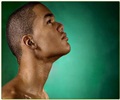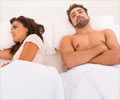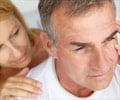Men having low sexual desire and satisfaction, either related to age or season, may benefit from exposure to bright light, which raises testosterone levels.
- Male hormone testosterone promotes sexual desire or libido.
- Many men with low sexual drive show low testosterone levels.
- Blood levels of testosterone in men shown to decline in winter months.
- Exposure to bright light may up testosterone levels, promoting libido in men with hypoactive sexual desire.
Sexual Problems In Men
A variety of sexual problems occur in men worldwide, affecting their sexual satisfaction. These include erectile dysfunction, problems with ejaculation, orgasmic issues and a low interest in sex (libido).TOP INSIGHT
Having low interest in sex? Step out into the sun or turn on the lights.
Details of The Study
A group of researchers from the University of Siena in Italy have studied the effects of exposure to bright light on sexual responses. They found that routine, early morning use of a light box, similar to those used to overcome Seasonal Affective Disorder (SAD), caused both increased testosterone levels as well as higher reported levels of sexual satisfaction.The scientists, led by Professor Andrea Fagiolini, selected 38 men who were attending the Urology Department of the University of Siena after being diagnosed with hypo-active sexual desire disorder or sexual arousal disorder, both of which are characterized by a lack of interest in sex. All men underwent an initial evaluation to find out their baseline level of interest in sex, and testosterone levels were also measured at the same time.
The scientists divided the participating men into two groups, with one group receiving regular light treatment using a specially customized light box. The control (placebo) group was treated with a light box which had been adapted to emit significantly less amount of light. Both groups underwent this exposure to light early in the morning, with treatment lasting about half an hour per day. Following two weeks of light treatment or placebo, the researchers reassessed degree of sexual satisfaction and testosterone levels.
Results of The Study
It was found that levels of sexual satisfaction were significantly more in the treatment group, as compared to the placebo group.Professor Fagiolini said, “We found fairly significant differences between those who received the active light treatment, and the controls. Before treatment, both groups averaged a sexual satisfaction score of around 2 out of 10, but after treatment the group exposed to the bright light was scoring sexual satisfaction scores of around 6.3 – a more than 3-fold increase on the scale we used. In contrast, the control group only showed an average score of around 2.7 after treatment”.
Additionally, testosterone levels showed an increase in men who had been given active light treatment. The average testosterone levels of the control group, however, showed no major change during the course of the treatment. Levels were around 2.3 ng/ml at both the starting and the end of the study. On the other hand, the group that was administered active treatment displayed an increase in testosterone levels from around 2.1 ng/ml in the beginning to 3.6 ng/ml after two weeks.
Professor Fagiolini further elaborated, “The increased levels of testosterone explain the greater reported sexual satisfaction. In the Northern hemisphere, the body’s testosterone production naturally declines from November through April, and then rises steadily through the spring and summer with a peak in October. You see the effect of this in reproductive rates, with the month of June showing the highest rate of conception. The use of the light box really mimics what nature does”.
Testosterone And Sexual Desire – How Light Therapy May Help
The male sex hormone testosterone is known to increase sexual desire, though scientists are yet to figure out how. Low levels of testosterone are not the only reason for a low sexual drive, though many men with low sexual drive show low testosterone levels. Other causes of a decreased sexual interest include stress, lack of sleep, depression and chronic underlying medical disorders.Dr Fagiolini explains how light therapy may increase testosterone levels and promote libido - “We believe that there may be several explanations to explain the underlying mechanism. For instance, light therapy inhibits the pineal gland in the center of the brain and this may allow the production of more testosterone, and there are probably other hormonal effects. We’re not yet at the stage where we can recommend this as a clinical treatment. Even at that stage, there will be a few patients – for example those with an eye condition or anyone taking medicines (antidepressants or antibiotics) which affect light sensitivity – who would need to take special care. However if this treatment can be shown to work in a larger study, then light therapy may offer a way forward. It’s a small study, so for the moment we need to treat it with appropriate caution”.
Currently Available Treatment Options For Low Sexual Drive
The researchers observe that several possible reasons may exist for lack of sexual drive, and treatment depends on the underlying cause. However, currently available therapeutic options include testosterone injections, antidepressants, and other medications. The researchers believe that light therapy could provide similar benefits as medications, but with far lesser side effects.Future Research Plans
If the role of light therapy in improving hypo-active sexual desire is established, it may signify new treatment hope for men with decreased libido, without the side effects of medications.Professor Eduard Vieta (Chair of the Department of Psychiatry and Psychology at the University of Barcelona Hospital Clinic and treasurer of the ECNP) remarked “Light therapy has been used successfully in the past to treat some forms of depression and this study suggests now that it may also work to treat low sexual desire in men. The mechanism of action appears to be related to the increase of testosterone levels. Before this kind of treatment, which is likely to be better tolerated than pharmacological therapy, gets ready for its routine use, there are many steps to be implemented, including replication of the results in a larger, independent study, and verifying whether the results are long-lasting and not just short-term”.
References:
- Konstantinos Hatzimouratidis, MD; Epidemiology of Male Sexual Dysfunction; American Journal of Men’s Health
Source-Medindia
 MEDINDIA
MEDINDIA





 Email
Email










